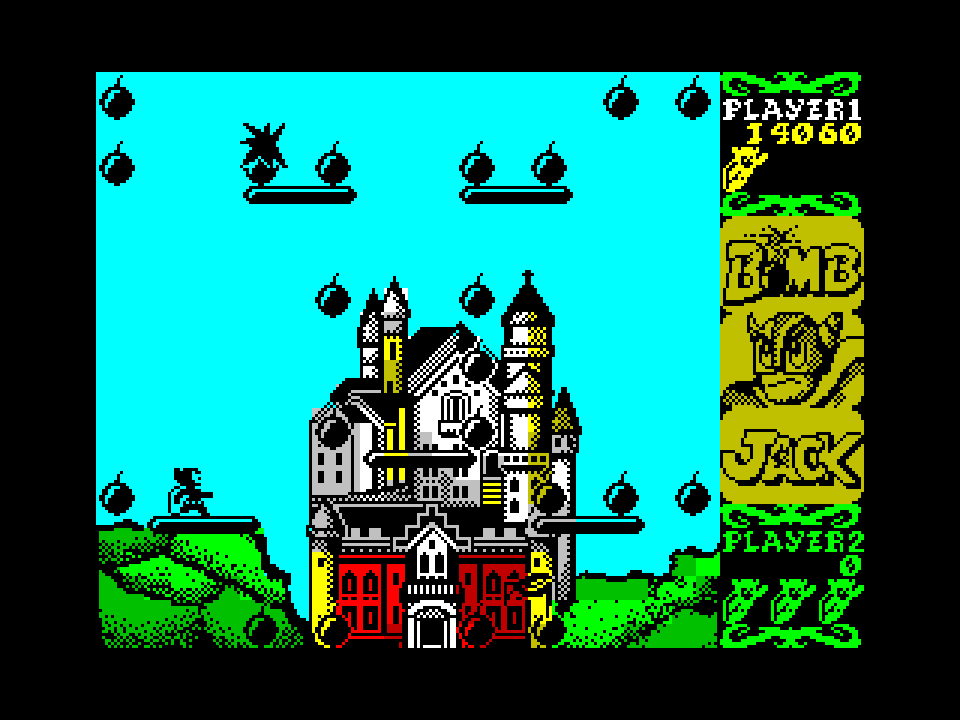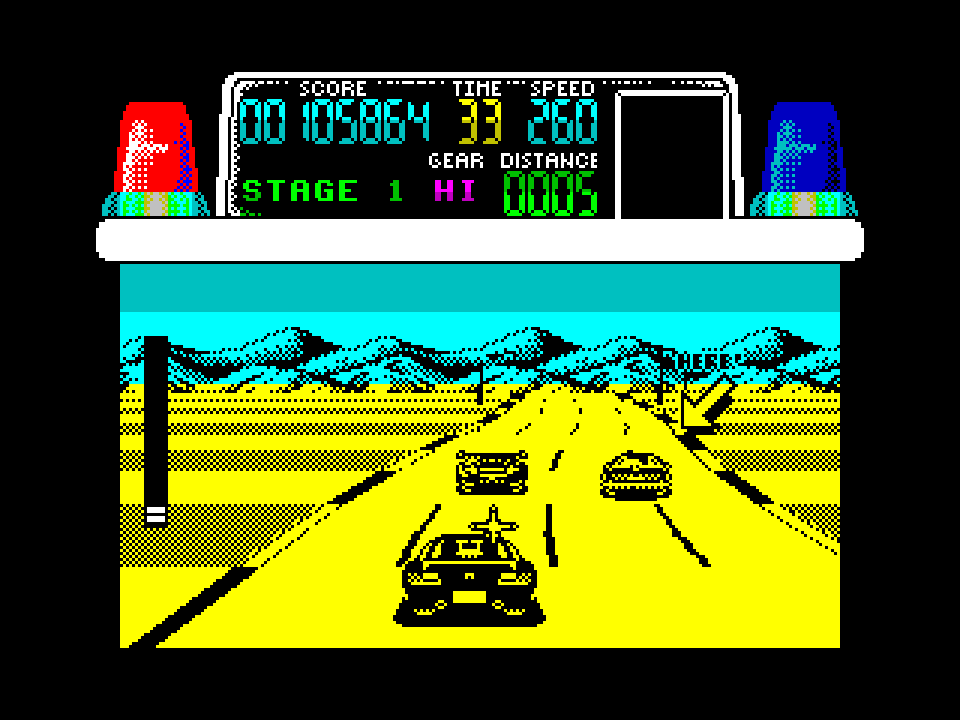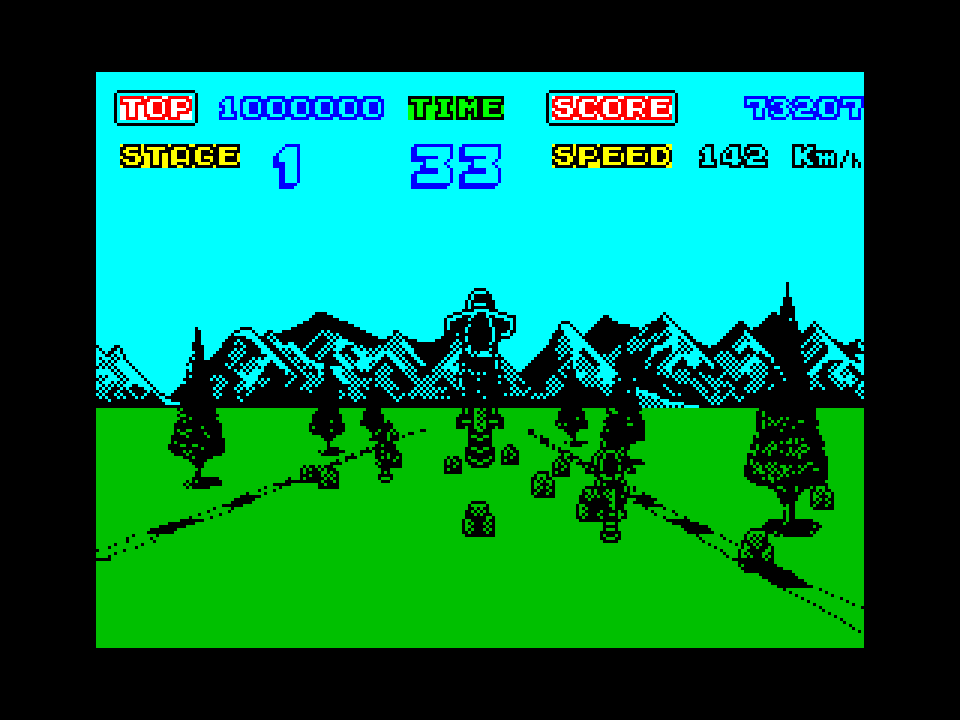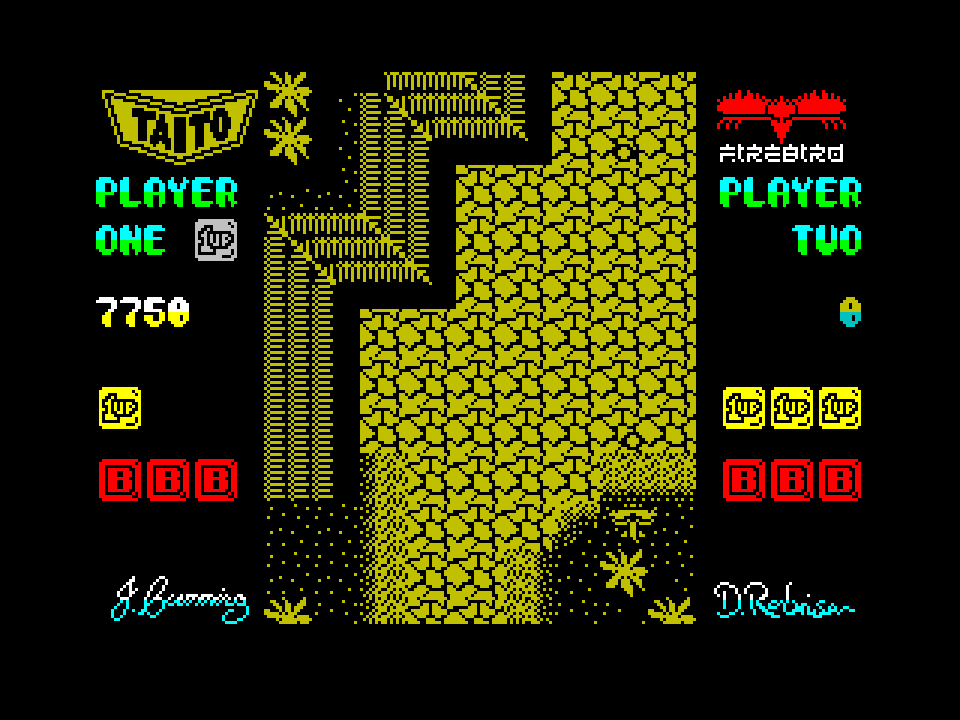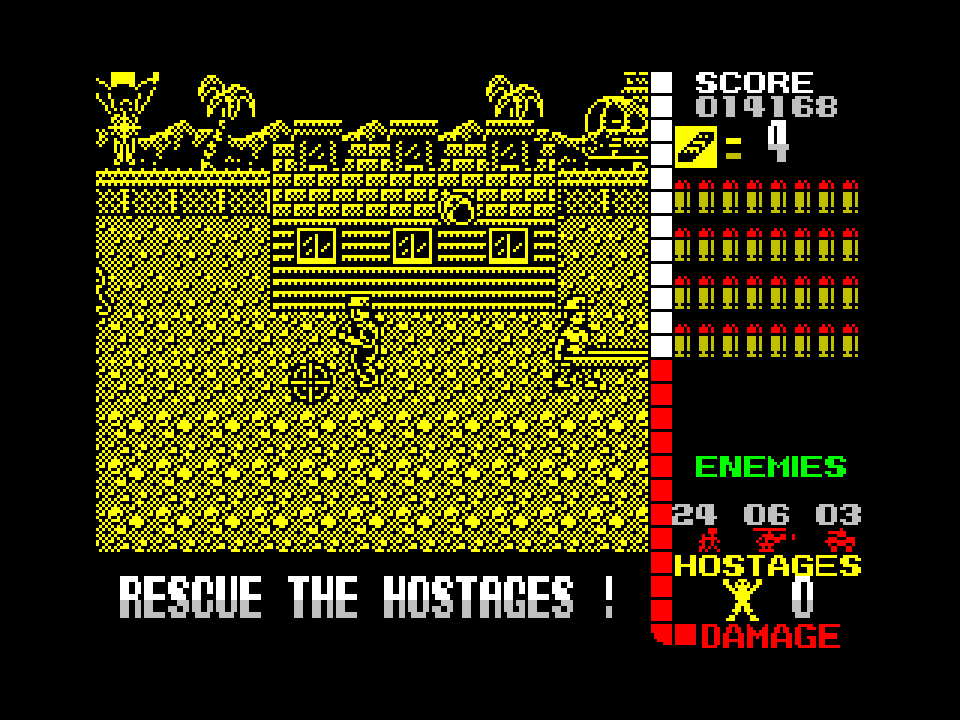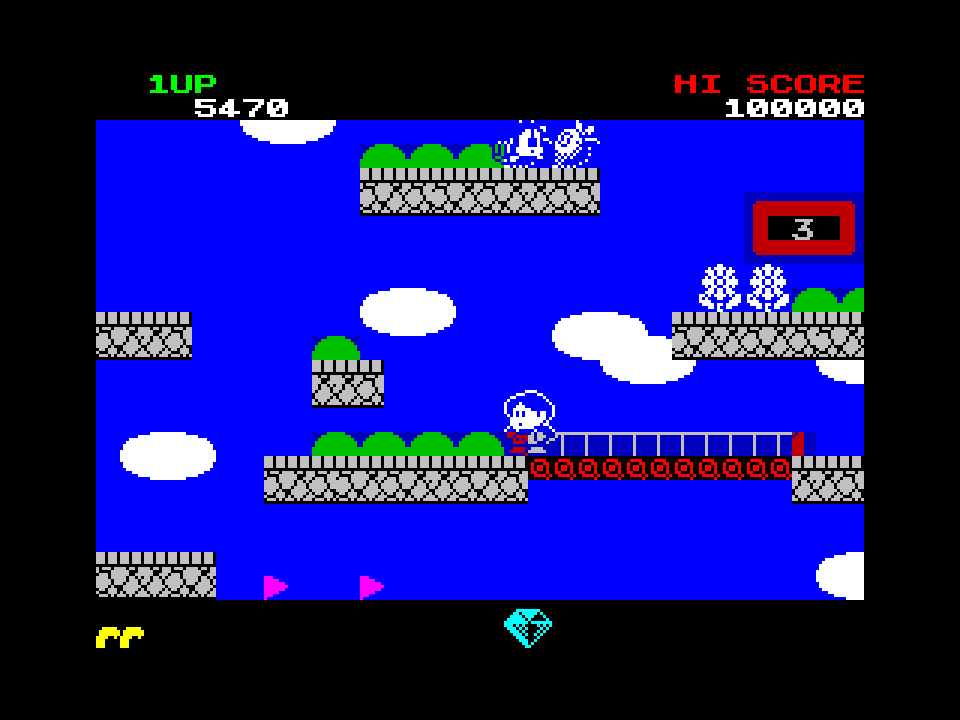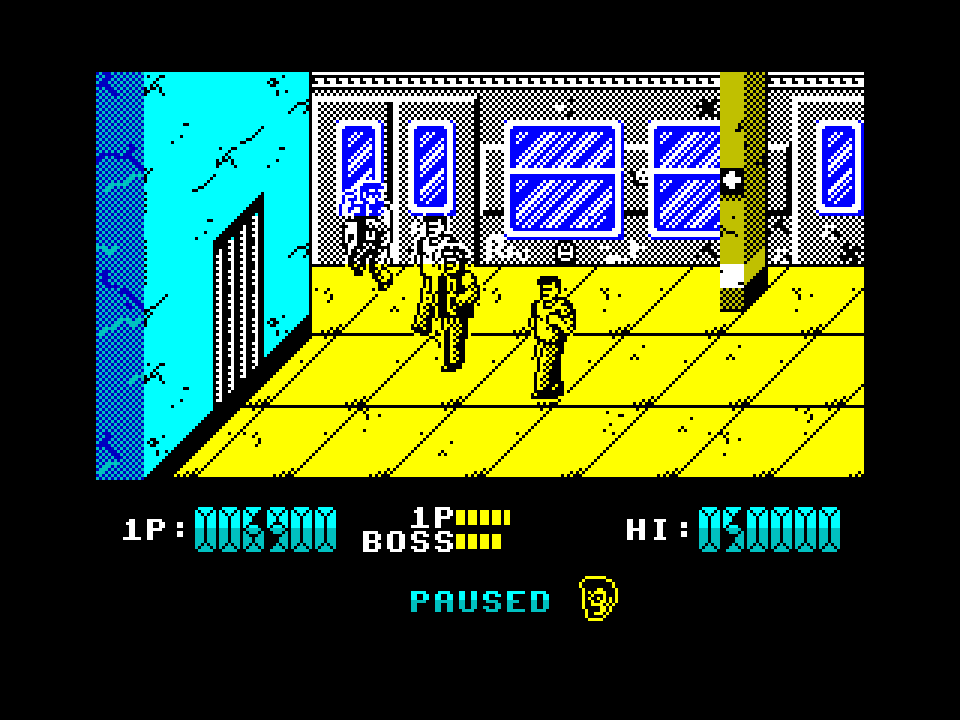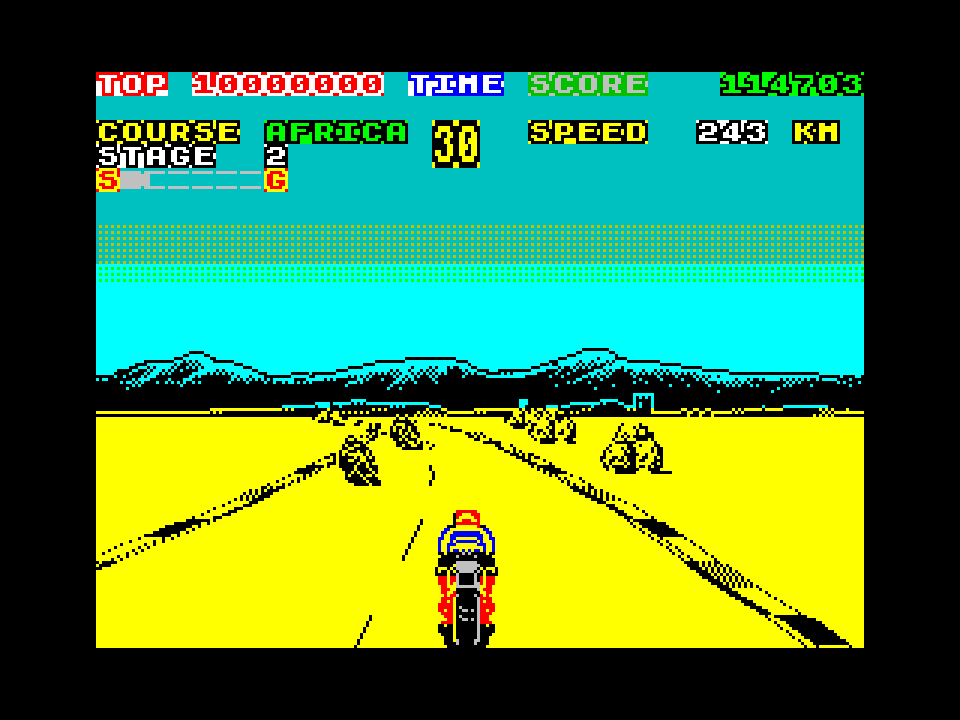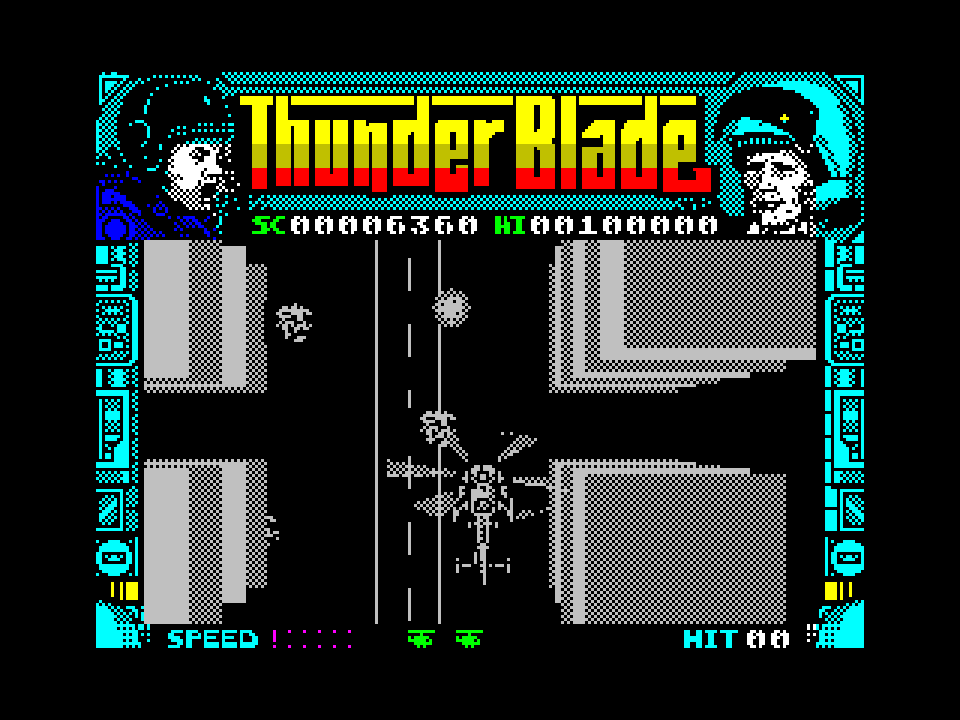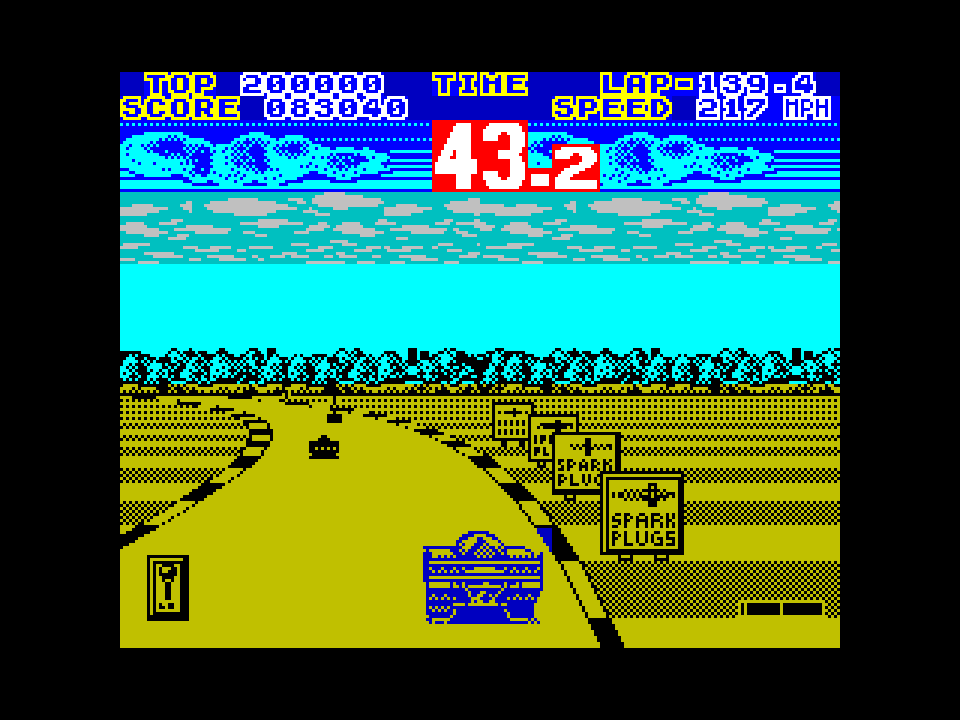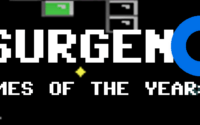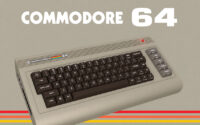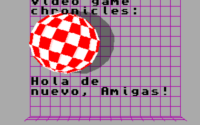10 Arcade Ports – “As Good As They Could Get?”
To quote Mel Croucher in the “From Bedrooms To Billions” (2014) documentary: “By 1984, certainly ’85, the parasites had moved in… Yeah? The managers, the agents… The celebrity agents… The accountants… The bankers… The lawyers… The publicity agents… The parasites had invaded, because they could see that the body was ripe… For bloodsucking…!”
Truer words have rarely been spoken. And if they weren’t on the inside back then, they have moved in with their entire legion now… Loot boxes, MTX, Games as Disservice, and what the hell all the shit is called that’s out there these days… And this “idea” that you can milk your consumers without consequences of course affects the quality of the software sooner or later. Packaging a dog turd in gold wrapping and perfuming it… How many of these gifts do you have to buy before enough is enough? And there’s always that deceit that affects and affected everybody… Except for the pirates, of course…!
But there was also that fleeting moment in time where it still felt like the industry forming was “pro-consumer”. That “publishers” didn’t think it was a good idea to bite the hand that fed it. Who could have guessed that it would derail as badly as it did towards the end of the 10s? But the 10s have also been the ultimate proof that if you shake hands with some of these bastards, you have to count your fingers afterwards.
So what the hell does this have to do with “Arcade Ports”…? We’re getting to that. The point in comparing two vastly different eras of video game history here is to illustrate that there were “dog turd”-gifts back in the days as well. Just not on the same scale as today. Proof? Browse Google’s or Apple’s store for mobile games. Or hell, browse Steam, Origin, etc.
Let’s be honest here once more while we’re still harping on the same string – The mobile games from 2010 that will be fondly remembered by video game players in the year 2040 can probably be counted on one hand with some fingers missing. The creativity and passion for developing these games simply didn’t manifest itself from the beginning, and the energies never even shared the same universe. And there certainly aren’t as many original and innovative ideas in the mobile realm. Or people who do something artistically impressive and inspiring, and then becomes an artist whose work is remembered for decades to come.
And there you are “today” – Forced to be content with something lesser and inferior. Something that was either better or more memorable in its original form. And that is this idea that can be used to draw a somewhat blurry parallel to the Golden Era… Because maybe it has always been this way in some way or another…? Except back then, you didn’t play a Z-grade Puzzle Bobble on a 4-inch screen when you could have played the original on a 40-inch T.V. – You played an “Arcade Port” that was the pure definition of “hit or miss”.
So all these “Arcade Ports”… They didn’t have ads, gambling mechanics bordering on armed robbery– I mean “loot boxes” (God damn those two “terms” are hard to tell apart!), but they belonged in this uncertain “gray zone” on the quality spectrum of commercial software. All those titles… It always was and remained a provocative and sensitive subject throughout the years. And it occasionally made the blood boil and the fever skyrocket for all the wrong reasons… And every now and then came that disgraceful moment where one had to surrender and be at ease with the thought: “Okay, so it’s better than nothing.” (Just like that inferior and bastardized €1 Puzzle Bobble-clone.) It was a feeling that caught on like wildfire. That at some point, “something” wasn’t quite good enough…
The Coin-Op conversions and the very volatile novelty surrounding them came straight from the software houses in order to construct the frail illusion of domestic arcade experiences. And sometimes with that aforementioned “gold wrapping” – “Screenshots from the arcade version” in very small letters on the back of the game box.
In this “intermission”, we’ll briefly look at a couple of these conversions for the Spectrum. (Since we’re on the subject, and everything, eh?) But instead of digging out the 80s equivalence to today’s instantly forgettable “exclusive” mobile games with shallow content and extremely short-lived entertainment value, the theme is:
Ports that were as good as they (probably) could get. Or as good as / better than they were on the C64. (And in a very few instances even better than they were on the Amiga!)
While it’s true that almost none and nearly zero of the Spectrum-ports sounded better than their C64-counterparts, we can still consider the notable differences in gameplay and, to a certain extent, the visuals.
1. Bomb Jack (Elite, 1986)
No iteration of Bomb Jack, not even the arcade one, beat the C64-port when it came to the soundtrack – Mark Cooksey’s tunes are just so lively and catchy that nothing could have fit the game more perfectly. And in the gameplay department, the Amiga version was easily the worst and clunkiest one of them all. But the Spectrum variant has precisely nothing to feel ashamed of in that regard. It’s just as fluid and fun as it was at the arcades, and on the C64. Even the graphics have been nicely converted when we know what we’re dealing with – Especially the backgrounds. There are no horrible color-clashes going on either since the sprites are almost black with transparent outlines. (Which usually is a good choice.) And zero frame-rate issues. (This is obviously a must, and a constantly recurring criterion for a good arcade conversion.) Plus this version has the option to turn on the “Turbo Jump”, which makes this particular game so much more playable. Some people even say that this port is the best of them all. But one simply has to consider sound in a video game and that’s where the Spectrum version just doesn’t manage to outshine a certain other 8-bit version.
2. Chase H.Q. (Ocean, 1989)
This game was so infamously bad on the C64 that… I can’t even find a “good” comparison. But what you got was: No speed (Unless you call a car going at 35 kph “fast”.), no thrilling action, and a general feel of the developers not even giving half a shit… And the Spectrum version is– Well, you’d expect something similar in a moment in time where the 16-bit machines slowly were taking over, but this one is… Astonishingly good…! I have zero ideas about what went right here, but John O’Brien and Bill Harbison made serious efforts to make sure that the home version of Taito’s non-stop car-chase at least matched the original in some areas. As soon as you start racing after the baddies, you’ll notice the frame-rate even putting some Amiga-games to shame…! And the graphics have certain details from the Coin-Op intact. This is just how all conversions should have been done. (As long as it was possible, that is.) You should also run this game in 128K mode to get some nice bops (Much better than on the C64.) and some sampled speech. But it’s the representation of an original game that’s impressive here. It’s all included – Five stages of attempted vehicular manslaughter, a fine attract mode, an actual sense of velocity, and a real ending. (It’s just Nancy at Chase H.Q. who is missing her voice…!)
3. Enduro Racer (Activision, 1987)
How does it look when a Yu Suzuki Classic goes through the 8-bit transformation? Space Harrier wasn’t perhaps the finest example, but the C64-version had excellent music, and the “3D”-ground effect looked good on the Spectrum… But Enduro Racer is a different story! Well, there was no Amiga port of it, and the Atari ST version didn’t really do the original justice in any shape or form. As for the 8-bit variants… The C64-one lacked serious speed (With the bike looking like it rolled along at 50 kph instead of 200.) and was okay gameplay-wise at best. David Whittaker’s interpretation of maestro Hiroshi Miyauchi’s original music did its own thing and sounded great, but that was more or less it… On the Spectrum, you’re actually going fast down the dirt tracks and over those obstacles. It’s a fluid, partially airborne experience that meets that aforementioned criterion, basically. In 128K mode, you also get a savagely minimalistic interpretation of the original OST, and it just isn’t nearly as good as Whittaker’s C64-tunes. But on the other hand, you don’t have to deal with the annoying sound of a small, over-revving RC car on the Spectrum. You win something, and you lose something. But this is another solid port…!
4. Flying Shark (Firebird, 1987)
Just like many other arcade conversions, Taito’s Flying Shark was a whole set of mixed bags across the home platforms. The C64 even got two different versions made by two developers. (Sky Shark in the U.S.) And both were really decent Shooters. The Amiga port… Well… There certainly were better vertically scrolling Shmups that one could play instead. (And subsequently be happier about.) The Spectrum owners got something in between – Sure, a Shmup without in-game music but with merely some harsh sound effects is a “good” way to smother the atmosphere (But there’s some funky title-screen music at least.), or to make sure that it doesn’t even manifest itself. But that doesn’t change the fact that this version is a smooth-scrolling, well executed game with responsive controls. Plus it ain’t that bullshit to claim that features from the original is in this one as well. (Like the proper Coin-Op screen dimensions.) Okay, so there may not be any simultaneous, screen-cleansing six- or twelve-shooters, but there’s an upgradeable three-shooter at least. And the game’s four levels are not exactly the same as in the original, so even if you know the Coin-Op in your sleep, you get “new” levels… Plus they are varied and challenging enough. Visually, the game is no disappointment either.
5. Operation Wolf (Ocean, 1989)
More efforts were made – With satisfactory results. Operation Wolf on Sinclair’s and Commodore’s home machines had one common “theme” if you will – No matter what platform you owned, you didn’t need to feel ripped off. While the Amiga version naturally was closer to being arcade perfect, it wasn’t anywhere as fluid. (It looks like it’s on serious frame-skip.) But its default mouse controls made the game a joy to play, and Jean Baudlot’s covers of the original soundtrack had far more impact than the “softer” music in the Coin-Op. The C64-port had the fluidity, an exclusive title-screen tune by Jonathan Dunn, and its very own graphics style. The Spectrum version kept the fluidity (Remember that “criterion”? There are barely any sustained slow-downs even when there’s a lot of trigger-happy lunatics running across the screen.), but added way more detail to the sprites and backgrounds. Plus for a 48K game, it had pretty solid sound. Jonathan Dunn covered the music for this version too, and it’s “only” missing that aforementioned original title-screen tune from the C64 version. The sound effects aren’t horrible either. And it was truly admirable of Ocean to publish the best possible port on both / all three of these machines. (Because that didn’t exactly happen every time…!)
6. Rainbow Islands (Ocean, 1990)
The Amiga version of Taito’s classic (Yet another one!) was exceptionally good (When compared to many other arcade conversions on… Well, any home machine…) and surprisingly close to the original’s audiovisuals. The C64-port was just as playable even with its occasional and minor frame-rate drops and blockier “character-set”-graphics. But the Spectrum version is the big shock… Because it plays extremely well, looks definitely as good as it was technically possible, and it includes all levels. (Eight worlds with four levels in each. Including bosses.) The simultaneous on-screen colors are almost as many (Yeah, all right!) as in many C64-games, and it even “looks” like there are more than the Spectrum’s original colors in some levels – At times. Also run Rainbow Islands on a 128K-machine, and you also get a totally decent version of the original soundtrack. (The “Over The Rainbow”-remix plus the nice jingles.) A solid effort. There just isn’t that much more to add to the superlatives… And it was truly admirable of Ocean to publish the best possible port on both the Commodores and the Sinclair. (Because that certainly didn’t happen every– Time… Uh…)
7. Renegade (Imagine, 1987)
And what’s an 80s computer game without a healthy dose of street violence? Not very entertaining. Even if there still isn’t (And there should be!) a video game with “Deadbeat At Dawn”-levels of action, the sequel Target: Renegade was the zenith – It has some damn fine 8-bit brawling. (With a superior soundtrack on the C64.) Renegade on the C= still felt closer to the Coin-Op in terms of style, while the Spectrum version brought the 80s grit to the proceedings from the very beginning. Plus, this version of the game has more features. Just make sure you play the 128K version with the varied 8-bit Rockabilly OST (By legendary Fred Gray.) and all the little extra details and here and there. (Nothing quite like punching a motherfucker in the mouth when he’s lying down… Yeah… In a video game, that is.) Imagine sure as hell knew what they did, because they optimized the controls to one button instead of three like in the arcade version. And the controls work flawlessly. (In both original Renegade-games on the platform.) The less talked about Amiga version of Renegade semi-looks the part (And has a pretty odd-fitting soundtrack.), but if you compare its action to the 8-bit variants, it’s a pretty slow moving and not very enjoyable deal.
8. Super Hang-On (Electric Dreams Software, 1987)
Software Studios on the Spectrum must have become like that one reliable developer that you hire when you want to port some of the Coin-Ops that almost couldn’t exist on 8-bit platforms. I mean, this studio developed R-Type… R-Type…! And sure enough, the same studio took on both Afterburner and Galaxy Force… Okay, so the latter was as doomed and dead as it was on the other platforms, but Afterburner on Spectrum played better than on the C64. And speaking of these kinds of relatively rare ports, there is Super Hang-On… Everybody knows about SEGA’s near “OutRun”-iconic Hang-On games, and the big surprise here is… Here it comes again – That criterion that makes or breaks a game in this genre, be it on 8-, 16-, or any-Bit-platforms… And you all know it’s the combination of smoothness and responsiveness of the controls. The sonics might only impress someone who has been in prison since the late 70s and never even seen or played video game since then, but just look at the graphics on the Spectrum – Especially in motion. As far as gameplay goes, this is easily somewhere in the upper middle between the Amiga- and the C64-version. The latter was a sad sight. (But it had a great and exclusive soundtrack by Steve Barrett.)
9. Thunder Blade (U.S. Gold, 1988)
We’re now treading back into that minefield that is “8-bit Afterburner”-territory. The biggest elephants among the Coin-Op ports. Some of the really bad elephants carry names like Line Of Fire, Cisco Heat… Okay, we don’t need to go on with all that shit. But Thunder Blade didn’t quite cross that border into supreme awfulness – It’s not a shit game on neither the C64 nor the Spectrum. But it didn’t make many players, who knew and loved the original dearly, very happy. (It was still worse on the Amiga when considering that it “happened” to be a 16-bit machine.) C64-Thunder Blade had some rockin’ tunes by Mark Tait and… A helicopter-sprite that looked schweet… The Spectrum shows way more details overall in solid black and white. And a more decent “3D”-effect. (The buildings on Level 1 is a good example.) This effect is something that even the Amiga-port failed at… And it shouldn’t have… But where Speccy-Thunder Blade, too, falls very, very short is when it comes to that pesky frame-rate. You’re not really playing SEGA’s game at home at this point. It’s merely a monochromatic shadow of something majestic, but still – It probably couldn’t have been that much better either… What a cruel and merciless fate…
10. WEC Le Mans (Imagine, 1988)
“The most gruelling and challenging car race in the world is the 24 hour WEC LE MANS competition. Drive it, experience it, survive it. The most realistic and addictive racing game yet–“ Oh, come on, you can’t say shit like that when it isn’t even true… Konami’s Coin-Op sure is a charming high speed racer that takes like minutes to complete when you are the King of the circuit. (Four laps have to be completed with three checkpoints in each…) So no 24 h. endurance tests at the arcades. But when the game hit the C64, it was no longer a racing game, but a game where the driver sat behind the wheel while the road flickered between two shades of gray several times per second… At least that’s what it gave the illusion of… Okay, so the car moved judging by lamp posts, trees and stuff. So how the hell could the Speccy handle such a demanding game…?! ………… With elegance. We’re talking about that criterion again…! (It’s the last time it’s mentioned in this text, I swear.) The Spectrum runs this neat piece of software at a nice speed, and the controls are nowhere close to shit… Not bad at all. Jonathan Dunn did the music for both ports. And both versions sound really good. (The Spectrum one obviously in 128K mode. And the tune obviously sounding better through the SID-chip.)
Amazing, in a sense…
…
Some of us who grew up (In some direction at least!) in the 80s and paid serious attention during the well-documented home computer revolution, we still remember the hard rivalry between the C= and the ZX quite vividly. It was very present and very real. And for some reason, the arcade ports, good and bad, almost had their own isolated corner of the market. You knew that the software attempted to represent something else. They didn’t unite the sides against the forces that tried to siphon our money, but at least both sides could agree that the by far biggest risk to feel ripped off and disappointed occurred if you bought an arcade port unseen / unplayed…
Stating the obvious and in hindsight, most of the stuff related to either the C64 or the Speccy, rests upon heavy nostalgic values. Through those rose-tinted glasses it’s quite easy to remember that this all was The Shit back then. There are always two sides of any story relating to any kind of rivalry – Healthy competition on one side and the formation of fandom / fanboyism, the mental fusion of the consumer and the product, on the other. Time has a funny way of changing or destroying things. (Just like it’s okay to have synthesizers and keyboards in Extreme Metal music “nowadays”.) But the fact of the matter is that the foundation of everything that we associate with gaming today was built back then. No Old School originals – No ideas that can be “borrowed” for yet another shitty mobile game. Representations. Of something else. In modern times, you probably can’t explain it to anybody who wasn’t more or less of a– Passionate enthusiast back then…
But hell, we’ll keep trying.
…
There obviously are many many more good and decent arcade conversions on the Spectrum than the ten mentioned above. But we have saved two more from opposite sides of some vaguely defined scale – One for Monday next week, and one for Tuesday. That’s one of the finest ports for the old rubber-keyed machine, and one of the more… Interesting ones… (Say what you want about the latter, but it did provoke reactions all over the place…!)
So… Back to our main feature…!

